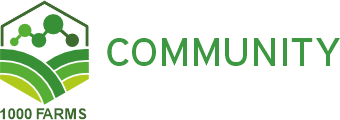Click on the link below to view the webinar by Kalkidan Mulatu, Research Management Coordinator at the Alliance of Bioversity and CIAT on 29 April 2025, presenting Unlocking Farmer-Preferred multipurpose Forage Mixtures: A Tricot Approach in Ethiopia
Presenter Bio: Kalkidan Ayele Mulatu is a researcher specializing in climate change mitigation and adaptation, with expertise in remote sensing, GIS, and sustainable forestry and agriculture. Since joining the Alliance in 2020, she has worked on global climate commitment tracking, real-time forest monitoring in Ethiopia, and now manages projects on forage-based livestock systems and sustainable food system pathways.
For more into contact Kalkidan at: k.mulatu@cgiar.org
Summary : Farmers’ insights are crucial for widespread adoption of new agricultural technologies. The Ethiopia Grass project employed the Tricot approach, where farmers directly compared three sets of grass-legume mixture of forage technologies under real-field conditions in Ethiopia. The presentation shares key experiences on citizen engagements towards identifying forage performances and factors that affect farmer preferences.
| Question | Answer | |
|---|---|---|
| Peter Enrich | Could you please clarify the exact list of species that you considered? | We used species that we know can be adopted and can provide feeding services for our environment. I will send you a list of the scientific names (please contact Kalkidan for the species list at k.mulatu@cgiar.org). |
| Rachel Chase | Are these new grass mixtures, or are they mixtures that have already been used by farmers? | Most often farms use a single grass species, so these mixtures are mostly new to the sites. |
| Abel Gari | What was the reason that the farmers selected those species? Did you have animal performance data to to support why they chose these particular species? And lastly what’s the plan so that the farmers can continue using those forage resources in the future? | The species were chosen based on qualitative feedback indicating high yield and biomass, as well as strong farmer preference due to perceived benefits in livestock productivity and product quality, despite the absence of formal biomass or feeding trials. Farmers reported improved milk quantity and quality, suggesting better nutrition from the forage mixtures. Additionally, there is a recognized need to strengthen the forage seed market in Ethiopia through species registration and private sector involvement to ensure sustainable supply and adoption. |
| Abel Gari | Have you checked the economic viability of adopting those forages? And how much is the involvement of ARI in this project? Because they have the money to apply those technologies with the farmers. | In the final stage of the project, a socio-economic assessment was conducted to explore the economic viability of integrating forages into existing farming systems, particularly through intercropping and using niche spaces like field boundaries. A preliminary cost analysis compared the inputs required for typical crops, such as maize in the Sidama region, with those for forage cultivation, including seed costs and soil impact. While no definitive conclusion was reached, the goal was to advocate for integrating forages without displacing traditional crops, promoting them as complementary rather than replacement components. The Agricultural Research Institutes, including ARARI and SARI (now Sidama Research Institute), were key partners in both generating and disseminating knowledge, actively participating through the multi-actor platform. They also support efforts to screen and register well-performing forage species into the national system, reinforcing government ownership and engagement. |

